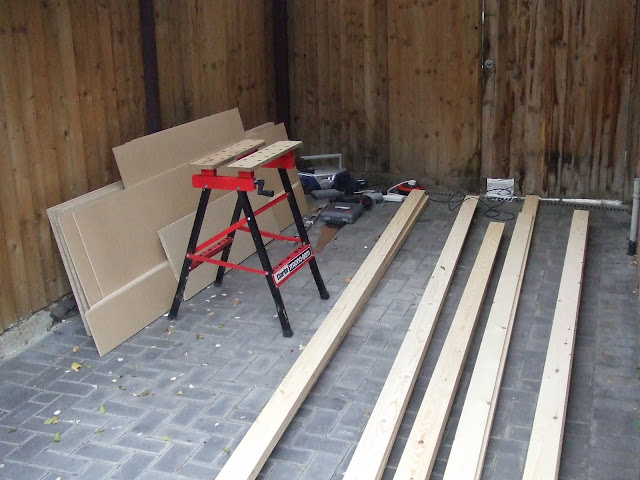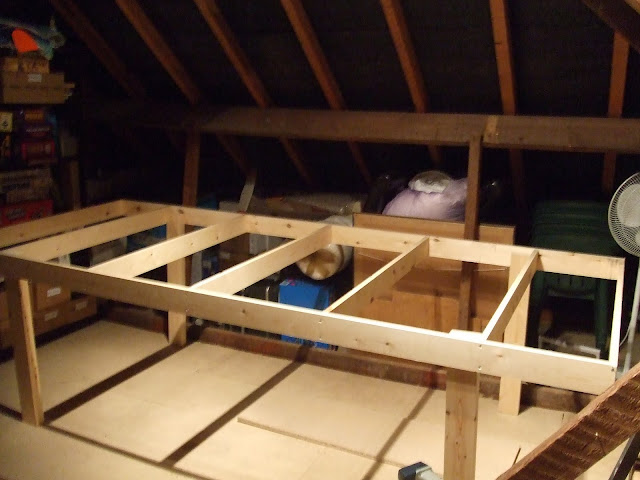Two working days of effort this weekend have resulted in my Scalextric tables being made and installed in the loft.
Mid-morning delivery of 4'x8' chipboard, 4'x8' MDF, and metres and metres of 20x95mm softwood, plus some 45x95mm for the legs.
One of the tabletop frames.
Unsurprisingly, the loft floor wasn't completely flat, so the most challenging job was trying to balance the frame, keep an eye on the spirit level, and fix each of the four legs.
First table finished with chipboard attached.
Second frame under construction.
Both tables finished.
MDF fitted around the outside of the tables to catch cars that leave the track.
The track layout, piece by piece...
The finished track, with spotlights installed and new pictures on the wall (subject of a future blog, I think). I had the first test session with Herman, one of Louise's Maltese cousins. We tried rally cars, with and without caravans in tow, then Formula 1 cars and lastly (since Herman is a biker) the Valentino Rossi motorbike. The track ran very well and the variety in the corners was really good.
The track is elevated with video boxes at the moment. I want to have several test sessions before starting to build hills or anything semi-permanent. You know where to come...





.jpg)
.jpg)
.jpg)
.jpg)
.jpg)






































